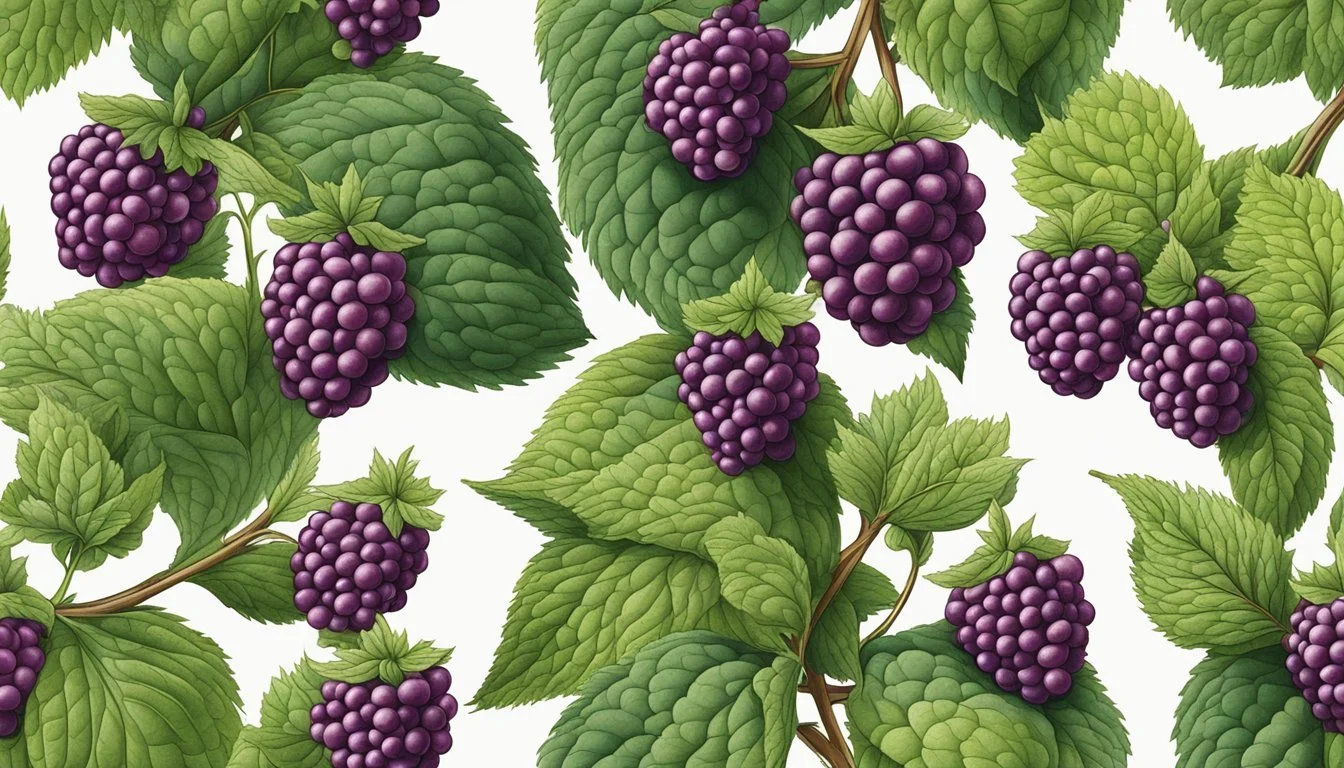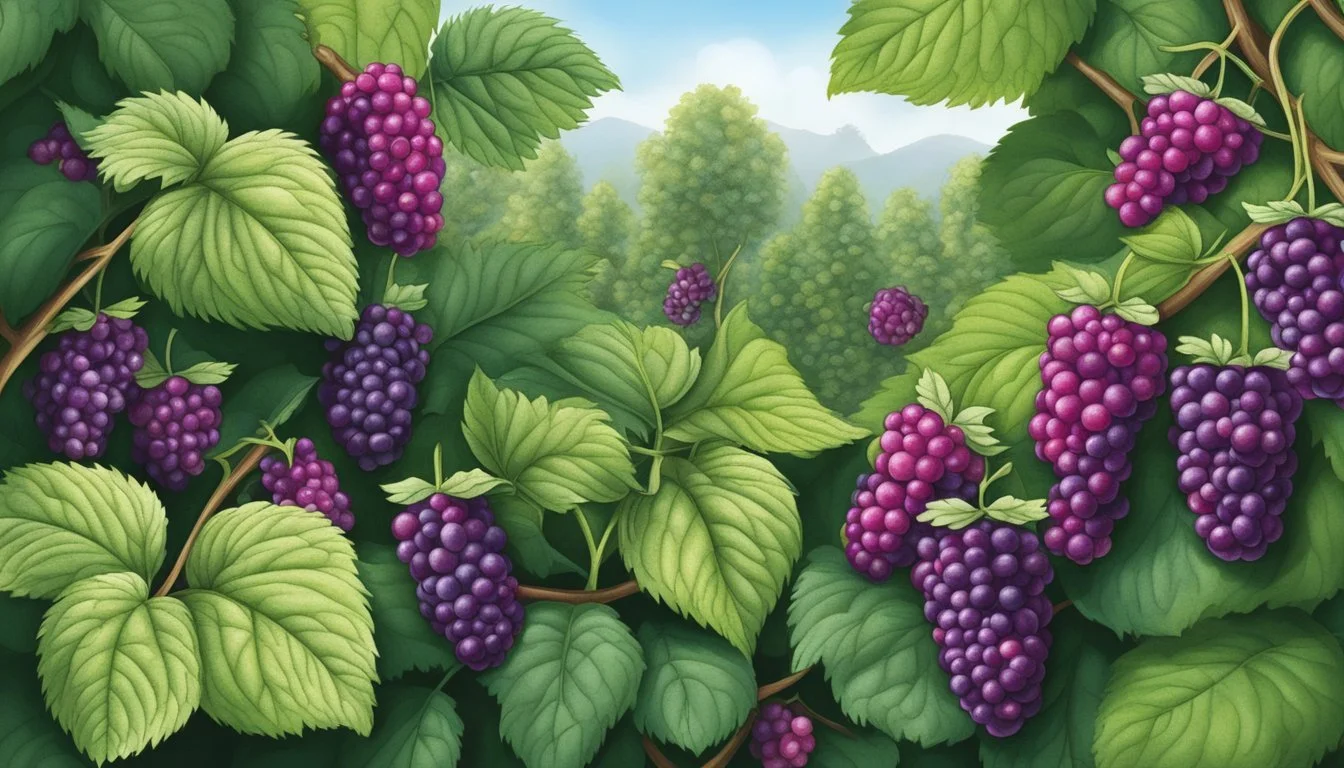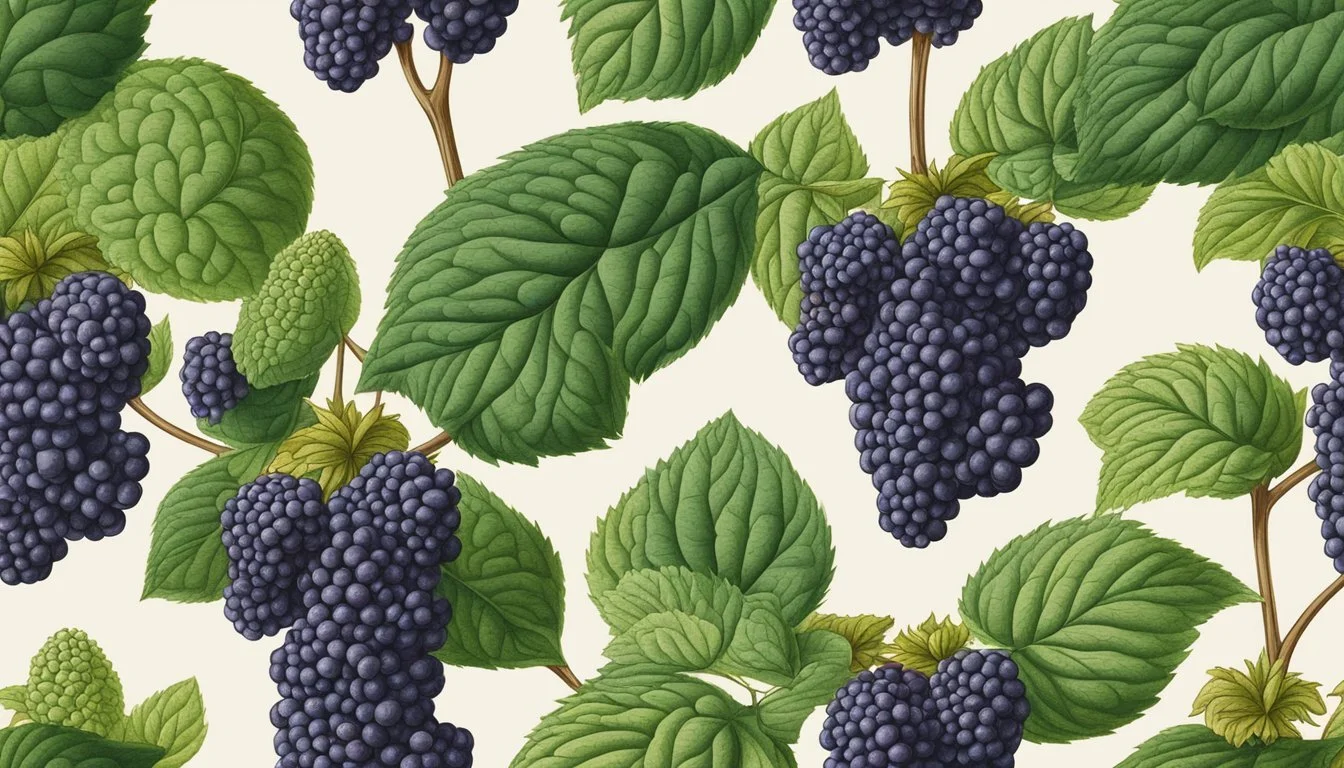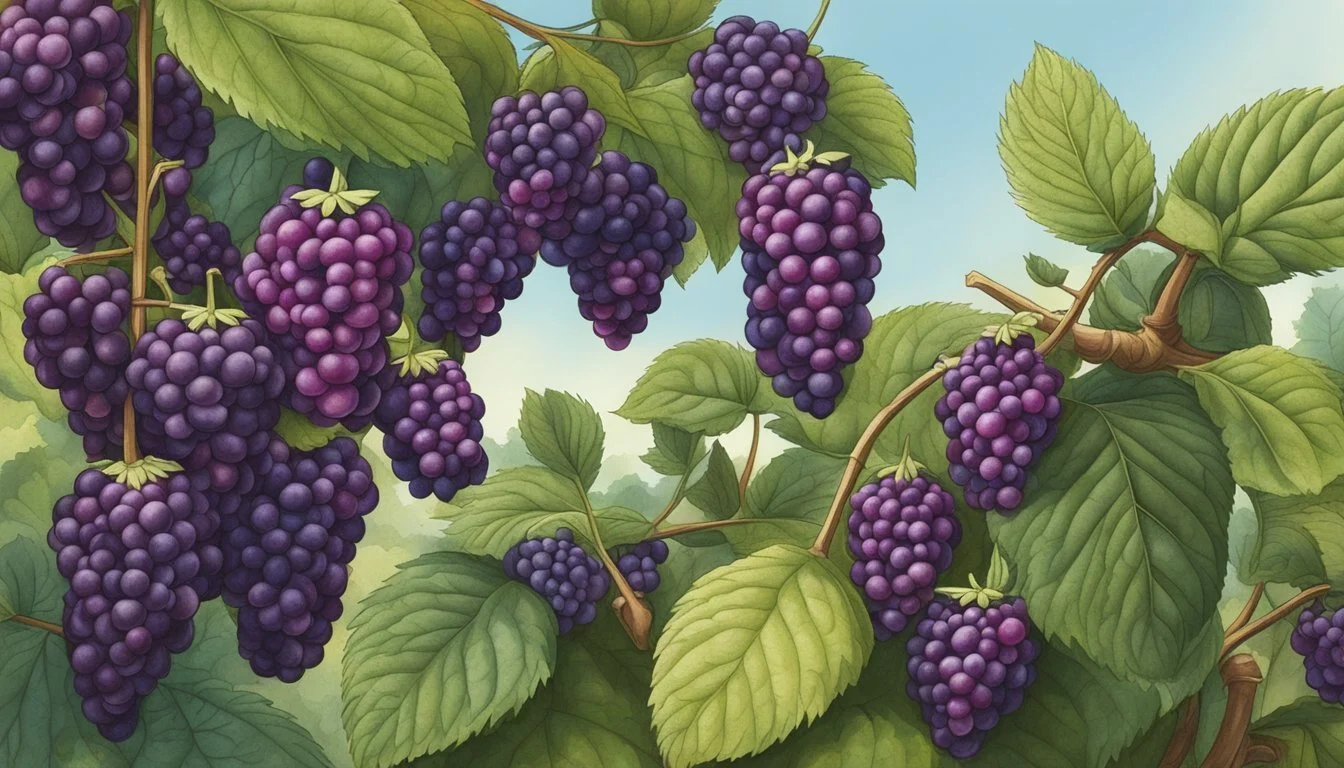Pest Control for Boysenberry Plants
Effective Strategies and Solutions
Boysenberry plants are popular among gardeners for their delightful fruit, but like any crop, they are not immune to pest infestations. Effective pest control is crucial for ensuring the health and productivity of these plants. Understanding the common pests that afflict boysenberry plants is the first step in protecting these valuable berry bushes. The most prevalent invaders range from tiny aphids to larger beetles, each with distinct behaviors and impacts on boysenberry health.
Effective pest management for boysenberry plants combines preventative practices with targeted treatments. Keeping the area around boysenberry bushes free of debris and weeds reduces the chances of pests taking up residence. In some cases, handpicking larger insects is a practical approach. However, when infestations become severe, the use of appropriate chemical controls may be necessary to save the plants and ensure a healthy harvest. Identifying the specific pests and understanding their life cycles enables gardeners to select the most effective treatment methods and apply them with precision.
Understanding Boysenberry Plants
Before diving into boysenberry pest control, it's crucial to familiarize oneself with the boysenberry plants' background, distinctive traits, and their growth requirements. Understanding these fundamentals sets the stage for healthier plants and fewer pest-related issues.
Cultivation and History
Boysenberries are a hybrid berry, cultivated from a mix of raspberries, blackberries, and loganberries. They were cultivated by Rudolph Boysen in California in the early 20th century. These berries are now grown in regions worldwide, particularly thriving in USDA hardiness zones 5-9. They are named after Boysen and have become a popular fruit in gardening due to their large, juicy berries.
Boysenberry Characteristics
Boysenberry plants are known for their large, succulent berries that are a deep maroon color when ripe. The berries are an excellent source of fiber and vitamin C. The plants itself are vigorous vines that require support as they grow, which can reach several feet in length. Boysenberry bushes produce long canes that bear fruit on the previous year's growth, known as floricane fruiting.
Growth Requirements
Boysenberries demand certain conditions to prosper optimally:
Sunlight: These plants necessitate full sun exposure for the best fruit production.
Soil: They thrive in well-draining, sandy soil, which helps avert common fungal diseases.
Watering: Boysenberry plants must be watered adequately but without oversaturation to prevent root rot and other moisture-related problems.
Climate: Ideally growing in zones 5 through 9, they are somewhat hardy but can suffer from frost damage if not protected.
By catering to these growth requirements, gardeners can ensure their boysenberry plants have the strong foundation they need to resist pests and diseases effectively.
Choosing the Right Location
The foundation of successful boysenberry cultivation is selecting an optimal location. This choice directly impacts the plant's ability to grow, yield fruit, and resist pests. Vital considerations include ensuring adequate sunlight, well-draining soil, and proper spacing for air circulation.
Soil and Sunlight Conditions
Boysenberry plants demand a location that offers six to eight hours of direct sunlight per day. They thrive in well-draining soil that is rich in organic matter, which supports root health and fruit production. The soil should have a pH of 6.0-7.0, conducive to nutrient uptake.
Spacing and Air Circulation
To prevent disease and promote healthy growth, boysenberry plants should be spaced in a way that allows ample air circulation. Gardeners need to ensure that there is sufficient room between plants—typically about 3-4 feet apart. This spacing helps decrease humidity around the foliage, reducing the risk of pest infestations and providing conditions closer to those found from fresh to grocery stores where produce is displayed with room to breathe.
Planting and Propagation
Proper soil preparation and planting techniques are essential for the successful cultivation of boysenberries. Understanding the distinct propagation methods will further ensure a thriving growth.
Preparing the Soil
Boysenberries thrive in organically-rich, well-draining soil with a pH of 6.0-7.0. Before planting, incorporate compost or well-rotted manure to enrich the soil. Ensuring these soil conditions can greatly enhance the plant's establishment and future productivity.
Planting Boysenberries
When planting boysenberries, selecting a full sun location is crucial, as the plants require six to eight hours of sunshine per day. As for planting:
Dormant bare root plants should be planted during the cooler months.
Each small plant or vine should be placed in a hole 1-2 feet deep, with the crown of the plant 2 inches below the soil line.
For optimal growth, maintain a distance of 3-4 feet between each plant in the row.
Propagation Methods
Boysenberries can be propagated through various methods:
Cuttings: After fruiting has finished, identify new green canes for cutting. The top of the cane should be buried approximately 5cm under the soil in a container or garden bed.
Layering: Bend a vine gently towards the ground and cover a portion with soil, encouraging it to root while still attached to the parent plant.
Division: Separate the plants during the dormant season and replant immediately to prevent root desiccation.
Each propagation method has its own advantages and specific steps, but all share the common goal of multiplying the boysenberry plants to produce more fruit.
Caring for Boysenberry Plants
Proper care is crucial for healthy boysenberry plants, involving specific techniques for watering, fertilizing, pruning and training, and mulching. Adhering to these methods ensures productive plants with bountiful harvests.
Watering
Boysenberry plants require regular watering, particularly during dry periods. They benefit from 1-2 inches of water per week, taking into account any rainfall. Consistent soil moisture is vital, but over-watering can lead to root problems. Use drip irrigation to maintain an even soil moisture without wetting foliage, reducing the risk of diseases.
Fertilizing
Fertilize boysenberries with a balanced, slow-release fertilizer in early spring to promote strong growth. Incorporate compost into the soil to improve fertility and structure. Avoid over-fertilizing, which can lead to lush foliage at the expense of fruit production.
Pruning and Training
Prune boysenberry plants annually to remove any dead or diseased canes. Healthy canes should be trained on a trellis or support system to encourage air circulation and ease of harvest. Pruning also allows the plant to put more energy into fruit production rather than excessive vegetative growth.
Mulching
Mulch around boysenberry plants to conserve soil moisture, suppress weeds, and enhance soil quality. Organic mulches such as straw or bark chips insulate the roots and break down over time, adding nutrients to the soil and improving its structure. Maintain a mulch layer of about 2-3 inches, keeping it away from the base of the canes to discourage rot.
Pest Management
Effective pest management is crucial in maintaining healthy boysenberry plants. It involves proactive measures such as identifying common pests, implementing organic controls, and applying chemical treatments when necessary.
Identifying Common Pests
Identifying pests early is imperative in protecting boysenberry plants. Common pests include aphids, which can cause significant damage by sucking sap from the plants. Spider mites and whiteflies also pose threats by draining plant juices. Larger pests, such as beetles and cane borers, can directly harm the plant's structure. Observing for mites, thrips, and fruit flies is also important as they can quickly escalate into severe infestations.
Organic Pest Control Methods
Organic methods for controlling pests focus on non-chemical interventions. Introducing beneficial insects, like bees for pollination and predatory insects for natural pest control, is an organic strategy. Applications of insecticidal soap can effectively target soft-bodied insects such as aphids and mites without harming beneficial insects. Regular removal of weeds that can harbor pests is another crucial step. For larger pests, manual methods like handpicking beetles or installing bird netting can be employed.
Chemical Controls and Prevention
In severe infestations, chemical controls may be considered. Choosing targeted pesticides can minimize the impact on beneficial species and the environment. Chemicals such as permethrin or carbaryl, known commercially as Sevin, could be applied judiciously. It is essential to follow the product's guidelines to prevent damage to the plants or surrounding ecosystem. Additionally, preventive measures like proper sanitation and the control of fungal diseases can reduce the likelihood of pest outbreaks.
Disease Prevention and Treatment
Effective management of boysenberry diseases hinges on both preventive strategies and appropriate treatments. A holistic approach can minimize the occurrence and impact of common afflictions.
Common Boysenberry Diseases
Boysenberry plants are prone to several fungal diseases. These may include Anthracnose, which manifests as small, purple spots on young shoots and can spread to leaves and fruit. Cane and leaf rust is another significant disease, indicated by rust-colored spots, especially on the underside of leaves. Orange rust involves bright orange, blister-like lesions on leaves. Additionally, cane gall and hairy root are diseases caused by bacteria and fungi, respectively, that affect the canes and roots of boysenberry plants. Kuehneola uredinis is also known for causing cane and leaf rust issues in boysenberries, resulting in decreased plant vigor and fruit production.
Organic Treatments
Organic treatments revolve around cultural practices and natural products. It is vital to use sanitized pruning tools and remove infected plant material promptly to prevent the spread of diseases. Proper plant spacing encourages good air circulation, which can deter the development of fungal diseases. Organic treatment options include applying products like sulfur or copper-based fungicides, which can be effective against various fungal pathogens when used correctly.
Chemical Fungicides
In cases where disease pressure is high or organic treatments are not sufficient, chemical fungicides may be necessary. Products containing permethrin or carbaryl may be applied to control severe infestations. A targeted fungicide approach, based on the specific disease's lifecycle and environmental conditions, can be more effective and sustainable. Always follow label instructions closely to ensure safety and effectiveness while minimizing environmental impact.
Harvesting and Utilization
Proper harvesting and utilization of boysenberries are critical to enjoying their full flavor and benefits. These berries are known for their juicy quality and sweetness, and following the right techniques ensures they reach consumers at peak ripeness, whether for immediate enjoyment or future use.
When to Harvest
Boysenberries are typically ready to harvest when they turn a deep purple-black color and are easy to pull from the berry bush. The berries should be plump and detach with a gentle tug. Harvesting usually occurs in late spring to early summer, depending on the local climate and specific variety. The key is to pick the berries when they are fully ripe, as they do not continue to ripen once removed from the bush.
How to Harvest
To harvest boysenberries:
Wear gloves: Protect hands from thorns.
Gently detach berries: Use a soft touch to avoid bruising.
Collect in shallow containers: Prevent crushing by not stacking berries too high.
Harvesting should be done in the cooler parts of the day, preferably morning, to reduce the chance of heat damage to the juicy berries.
Storing and Enjoying Boysenberries
Storing:
Refrigerate immediately after harvesting to preserve freshness.
Do not wash berries until ready to use, to avoid spoilage.
Boysenberries can be stored in the refrigerator for up to a week. For extended preservation, they can be frozen whole on a baking sheet and then transferred to airtight containers where they will keep for several months.
Enjoying:
Fresh boysenberries are a versatile fruit that can be enjoyed in various ways:
Eaten raw for a burst of sweetness
Used in jams, pies, or desserts
Added to yogurt or cereal for a flavorful twist
Moreover, outside of home use, boysenberries are often processed and shipped fresh to grocery stores or utilized in commercial food production.
Additional Cultivation Tips
In cultivating boysenberry plants, gardeners should consider thornless varieties for ease of handling, use garden netting to protect the fruit, and employ strategies to attract pollinators for a successful harvest.
Thornless Varieties
For those who seek ease and comfort in their gardening endeavors, thornless boysenberry varieties present a practical choice. Not only do they maintain the sweetness and robust flavor expected from their thorny counterparts, but they also eliminate the hassle of dealing with sharp thorns during maintenance and harvest.
Using Garden Netting
Garden netting is a valuable tool for protecting boysenberry plants from a variety of pests. It's essential to ensure that the netting is well-secured while providing sufficient clearance for the plants to grow. The use of netting also helps preserve the quality and sweetness of the berries by preventing birds and other wildlife from feasting on them.
Attracting Pollinators
Gardeners can enhance their boysenberry plant's potential by attracting pollinators to their garden. Bees, the key pollinators for many plants, are attracted to boysenberry flowers and are crucial for fruit set. Providing a diverse array of flowering plants can help keep these beneficial insects in the garden vicinity.
Frequently Asked Questions
The following frequently asked questions address common concerns and provide practical solutions for managing pests and diseases in boysenberry plants.
What are the best natural remedies for pests on boysenberry plants?
For natural pest control on boysenberry plants, remedies such as neem oil and insecticidal soaps are effective organic options, targeting a variety of common pests without harming the plant or the environment.
How can I make homemade pest control for my boysenberry plants?
One can create homemade pest control using ingredients like dish soap, water, and sometimes canola oil or garlic. These mixtures work by suffocating or repelling pests, and they are a cost-effective method for small-scale infestations.
Which commercial pest control methods are recommended for boysenberry plants?
For severe infestations, commercial pest control products such as permethrin or carbaryl may be necessary. Always follow the manufacturer's instructions and consider the impact on pollinators and other beneficial insects when applying chemical treatments.
Are there specific pest control challenges for boysenberry plants grown in California?
Boysenberry plants grown in California may encounter specific pests, such as the California red scale or spider mites, that thrive in the state's warmer climate. Integrated pest management strategies that include monitoring and measures to maintain a balanced ecosystem can effectively manage these pests.
What common diseases affect boysenberry plants and how can they be treated?
Common diseases affecting boysenberry plants include fungal diseases like botrytis fruit rot and powdery mildew. Ensuring proper watering techniques and good air circulation are key prevention strategies, while treatments may include fungicides for more severe cases.
Why are my boysenberry leaves turning red and how do I address it?
Reddening of boysenberry leaves can be due to a nutrient deficiency or a viral disease known as raspberry leaf curl. A soil test can confirm a nutrient issue, which can be corrected through fertilization. For viral diseases, infected plants should be removed to prevent spread.









